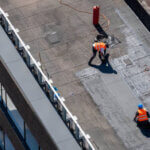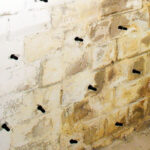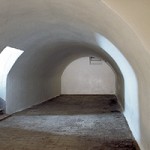There are countless waterproof concrete structures whose construction joints and expansion joints need to be professionally sealed. These joints can be sealed in different ways and with various materials, but specialized labor will determine the success of this type of work. Also, when repairing expansion joints, it is important that the material used as the joint sealant can absorb the movements of the joints without being damaged. At the same time, the joints must be reliably sealed in the long term. For all this, Prolisur has a long history that guarantees our effectiveness.
Joint sealing
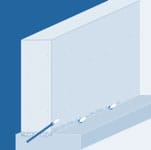
Repair and sealing of cracks and fissures in structures
Structural cracks in mineral construction materials such as concrete or mortar occur specifically if the low tensile and shear strength of these construction materials is exceeded, either due to mechanical overloading (cracks), concreting failures concreting, cavitation, material washing, etc…) or environmental impact. These pathologies can appear in all types of buildings
(residential, services, commercial, etc.), as well as in infrastructure and civil works.
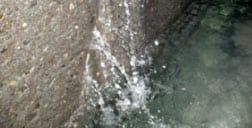
Sealing of surfaces in contact with the ground
The waterproofing of construction elements below ground by sealing existing surfaces in basements, underground car parks, retaining walls and terraces has been one of the most demanded activities throughout the history of Prolisur.
These elements must be protected from the penetration of soil moisture and water seepage. High performance systems with significant thickness applied directly on surfaces in direct contact with water are undoubtedly a good choice on many occasions.
However, in many other cases, it is necessary to resort to positive pressure treatments applied in inaccessible areas. In these cases, the causes of the damage may be the lack or inadequate application of external sealants, the aging of said sealants, fluctuating groundwater levels and/or structural movements. In this way, the water penetrates through cavities, joints and defects, and can seriously affect the structure of the building. These situations are common in:
- Basements and partial basements.
- Underground parking lots.
- Concrete slabs.
- Bridge pillars and side walls.
- Tunnel structures.
- Sewage systems and well installations.
- Foundation pits.
- Retaining wall.
- Buildings located on a slope.
- Expansion joints, especially in defective sheets and tapes.
- Connection joints between new and old buildings.
- Pipe joints.
- Sewer connections.







